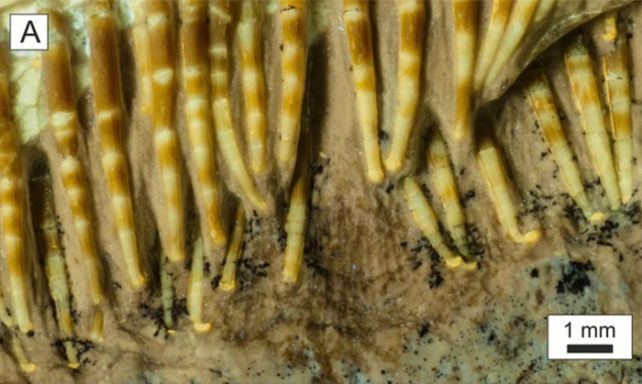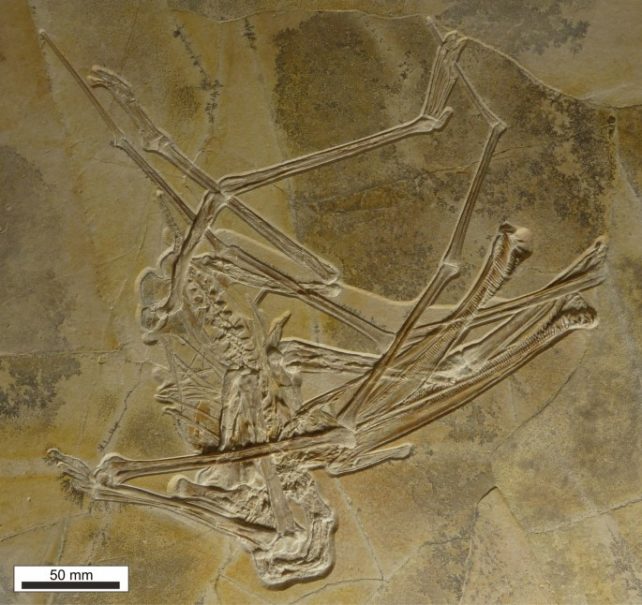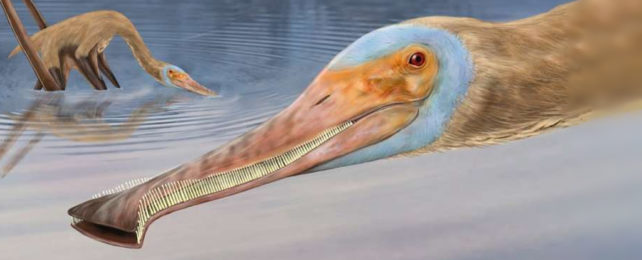A bizarre spatula-billed pterosaur with ridiculous amounts of teeth has been discovered in a German quarry. Its unique facial anatomy suggests it shares feeding traits seen in today's ducks and whales.
While Pterodaustro from Argentina may have even more teeth, this newly discovered species's mouth protrusions are strangely long and thin in comparison. The researchers compared these 480-plus teeth to the prongs of a nit comb.
"What's even more remarkable is some of the teeth have a hook on the end, which we've never seen before in a pterosaur ever," explains University of Portsmouth paleontologist David Martill.
"These small hooks would have been used to catch the tiny shrimp the pterosaur likely fed on – making sure they went down its throat and weren't squeezed between the teeth."
So instead of being chompers and tearers, these teeth were used more as traps. This suggests the meter-long-wing-spanned pterosaur must have been a filter feeder like baleen whales are today.

"There are no teeth at the end of its mouth, but there are teeth all the way along both jaws right to the back of its smile," says Martill.
The open spatula part of the beak likely scooped water into its down-curving length. The pterosaur either passively filtered or squished out between its teeth, trapping any planktonic animals like tiny shrimp that were swimming around in there. This suggests they hunted in the shallows, dabbling at the water as they waded on long legs like a flamingo.
"Filter-feeding among pterosaurs likely evolved from animals that collected food items from the water surface or immediately below without applying a piercing bite," the team writes in their paper.
"The elongation of the rosette teeth and the reduction of the interdental space as well as the elongation of the jaws enhanced this filter effect."

The paleontologists marveled at the near completeness of the skeleton, remarkably preserved in fine layers of limestone for more than 150 million years. Pterosaurs are relatively rare in the fossil record because of the fragility of their thin-walled hollow bones, but this specimen even included small patches of wing membrane.
"It must have been buried in sediment almost as soon as it had died," explains Martill.
The team identified the pterosaur belongs to the family Ctenochasmatidae, which lived during the late Jurassic and early Cretaceous.
Martill and colleagues named the ancient animal Balaenognathus maeuseri – the species name in honor of one of the researchers on the team, Matthias Mäuser, who sadly passed away recently.
This research was published in Paläontologische Zeitschrift.
